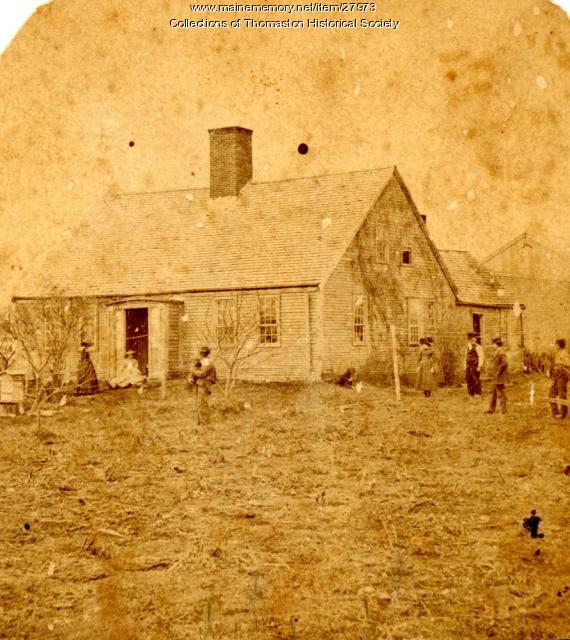Keywords: testing
Item 35274
Biddeford Fire Department test by mill buildings, 1909
Contributed by: McArthur Public Library Date: 1909 Location: Biddeford Media: Photographic print
Item 135707
Alcoholometer set by Charles Gerletti of Glasgow, made 1834-1839
Contributed by: Maine State Museum Date: circa 1836 Location: Glasgow Media: Mahogany, glass, felt, paper
Item 59792
Assessor's Record, 55-63 Kennebec Street, Portland, 1924
Owner in 1924: Portland Stove Foundry Company Use: Office - Test House
Item 98956
Assessor's Record, 1929-2013 Forest Avenue, Portland, 1924
Owner in 1924: Riverton Realty Company Use: Amusement
Exhibit
Maine Yankee Nuclear Power Plant in Wiscasset generated electricity from 1972 until 1996. Activists concerned about the plant's safety led three unsuccessful referendum campaigns in the 1980s to shut it down.
Exhibit
Rum, Riot, and Reform - 1919 to 1934: The Nation Follows Maine Into Prohibition
"… begun by Neal Dow was realized in 1919 and tested from 1920 to 1934. Pushed forward by the Anti-Saloon League and the Woman's Christian Temperance…"
Site Page
Presque Isle: The Star City - Bangor and Aroostook GP-38, Presque Isle, 1991
"… lines and numbers that were added to an earlier test scheme. Pictured with engine 94 is young rail enthusiast, Frederick Asam."
Site Page
Scarborough: They Called It Owascoag - A Look Inside the Classroom Over Time - Page 1 of 4
"… spelling test.” Today, students are regularly tested from kindergarten up until high school (as well as college if attended.) The tests are taken…"
Story
I never thought I would work at a paper mill.
by Greg Bizier
I love science and managed the lab for International Paper's Otis Mill for 31 years.
Story
Mosher family history and my career at S.D. Warren
by Abbott Mosher
My family settled the Westbrook region and I am a 4th generation paper maker at S.D. Warren.
Lesson Plan
Longfellow Studies: Longfellow Amongst His Contemporaries - The Ship of State DBQ
Grade Level: 9-12
Content Area: English Language Arts, Social Studies
Preparation Required/Preliminary Discussion:
Lesson plans should be done in the context of a course of study on American literature and/or history from the Revolution to the Civil War.
The ship of state is an ancient metaphor in the western world, especially among seafaring people, but this figure of speech assumed a more widespread and literal significance in the English colonies of the New World. From the middle of the 17th century, after all, until revolution broke out in 1775, the dominant system of governance in the colonies was the Navigation Acts. The primary responsibility of colonial governors, according to both Parliament and the Crown, was the enforcement of the laws of trade, and the governors themselves appointed naval officers to ensure that the various provisions and regulations of the Navigation Acts were executed. England, in other words, governed her American colonies as if they were merchant ships.
This metaphorical conception of the colonies as a naval enterprise not only survived the Revolution but also took on a deeper relevance following the construction of the Union. The United States of America had now become the ship of state, launched on July 4th 1776 and dedicated to the radical proposition that all men are created equal and endowed with certain unalienable rights. This proposition is examined and tested in any number of ways during the decades between the Revolution and the Civil War. Novelists and poets, as well as politicians and statesmen, questioned its viability: Whither goes the ship of state? Is there a safe harbor somewhere up ahead or is the vessel doomed to ruin and wreckage? Is she well built and sturdy or is there some essential flaw in her structural frame?















